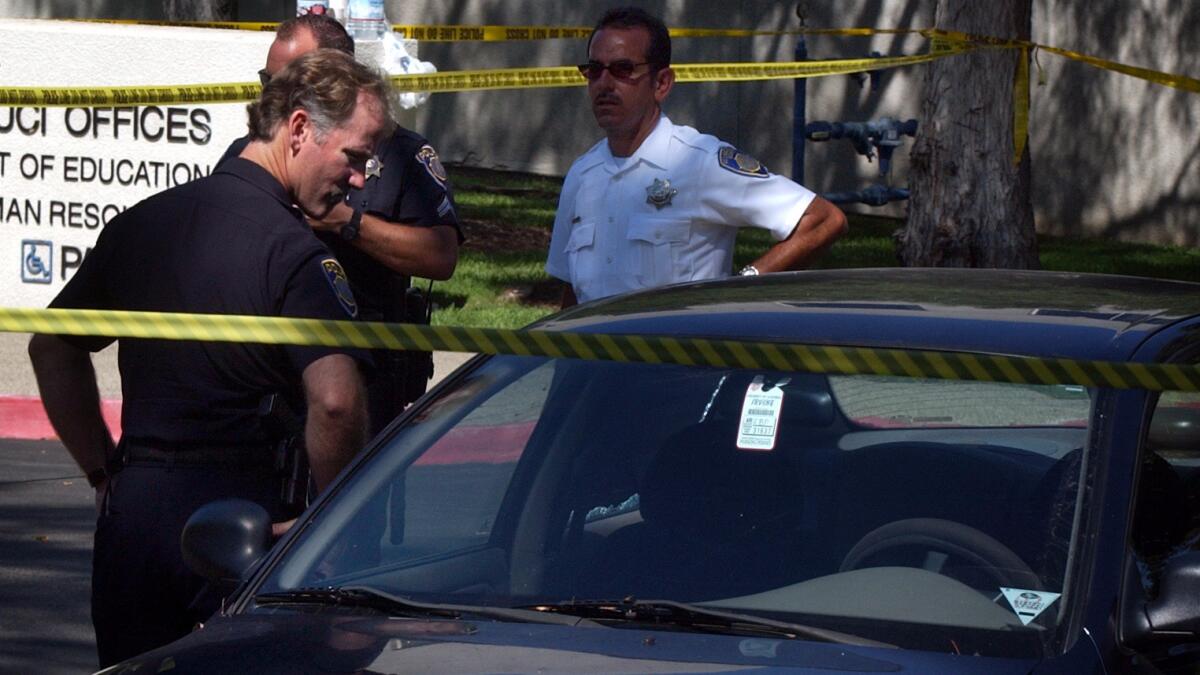Dozens of children die in hot cars each year. Here’s how we can stop that

- Share via
The hot-car deaths of two children in Georgia last week brought the nation’s total this year to 26, putting America on a grim pace to top its yearly average of 37, according to data compiled by KidsAndCars.org.
The Georgia father was charged with involuntary manslaughter after leaving his 15-month-old twin daughters in the back of an SUV parked in Carrollton.
Four other children died over the July 22-24 weekend, in Florida, Pennsylvania, Missouri and Texas, the nonprofit said.
In recent years as the number of hot-car deaths has risen, some car companies and makers of baby products have started developing new technologies to help remind parents to check the back seat.
Before the mid-1990s, the deaths were rare — usually the result of children entering unlocked vehicles and being unable to escape when the vehicle heated up, said Amber Andreasen, director of KidsAndCars.
Then things changed.
“We had this crazy trend in the mid- to late ‘90s,” she said.
That jump coincided with recommendations that parents put children in the backseat because of the danger posed by airbags, which automakers introduced in the mid-1980s and which became mandatory in 1998.
“Not only are they in the backseat, but now they’re rear-facing,” Andreasen said. That makes it easy for the driver to forget the child is present.
So what can be done? KidsAndCars has advocated a chime that would sound when a driver opens his door while a weight is still detected on the backseat. Others have suggested parents take matters into their own hands — such as putting a stuffed animal on top of their purse or briefcase as a reminder that a child is in the back.
The 2017 GMC Acadia SUV offers a Rear Seat Reminder system that monitors the rear doors, activating if the car starts within 10 minutes of opening and closing a rear door — which would probably mean the driver just put something in the backseat. When the car is turned off, chimes sound and a message appears on the dashboard telling the driver to check the backseat. The system is standard equipment starting with the 2017 model year.
Makers of baby products are also stepping in.
Evenflo offers the Sensorsafe car seat, which has a chest clip that communicates with a receiver plugged into a dashboard port. The system sounds a chime when the car is turned off, reminding the driver that a child is in the backseat, and also sounds if the clip is unfastened during transit. The price is about $150.
Sense a Life is a product developed by two Tampa engineers that deploys sensor pads in the car seat and driver’s seat. If the driver leaves his seat and the car seat pad still detects a weight of at least 2 pounds, a message is sent to the driver’s smartphone reminding him to remove the child. If the driver doesn’t respond, another alert is sent to a second parent or caregiver. The product isn’t on the market yet.
TOMY International’s First Years car seat sends an alarm to the driver’s cellphone if the seat gets too hot. The company discontinued the product in 2014, but it’s still available on Amazon for about $140.
Because the problem was dramatically worsened by the introduction of airbags and the practice of putting children in the backseat, how about allowing parents to disable or opt out of the airbag and put the child in the front passenger seat?
No way, Andreasen said. “Children are much safer in the back.”
Follow @molson21 on Twitter
ALSO
Another Tesla Autopilot crash, this time in China
Motorcycle lane-splitting inches closer to becoming law
QX30 Review: Infiniti makes a play for premium SUV buyers





